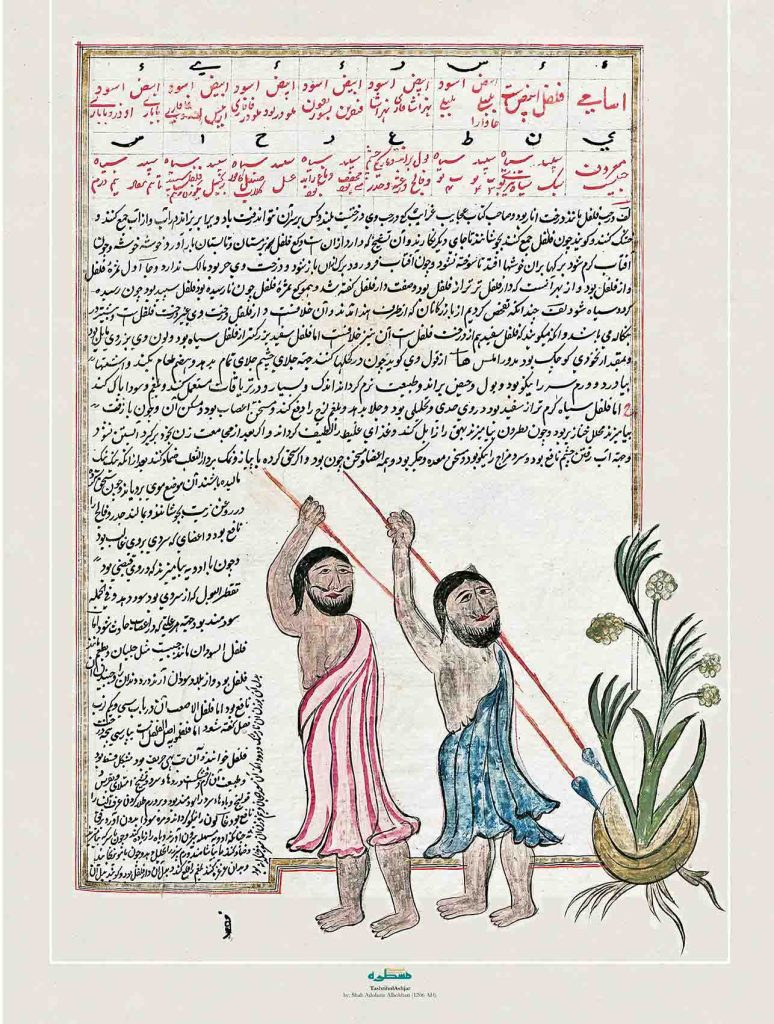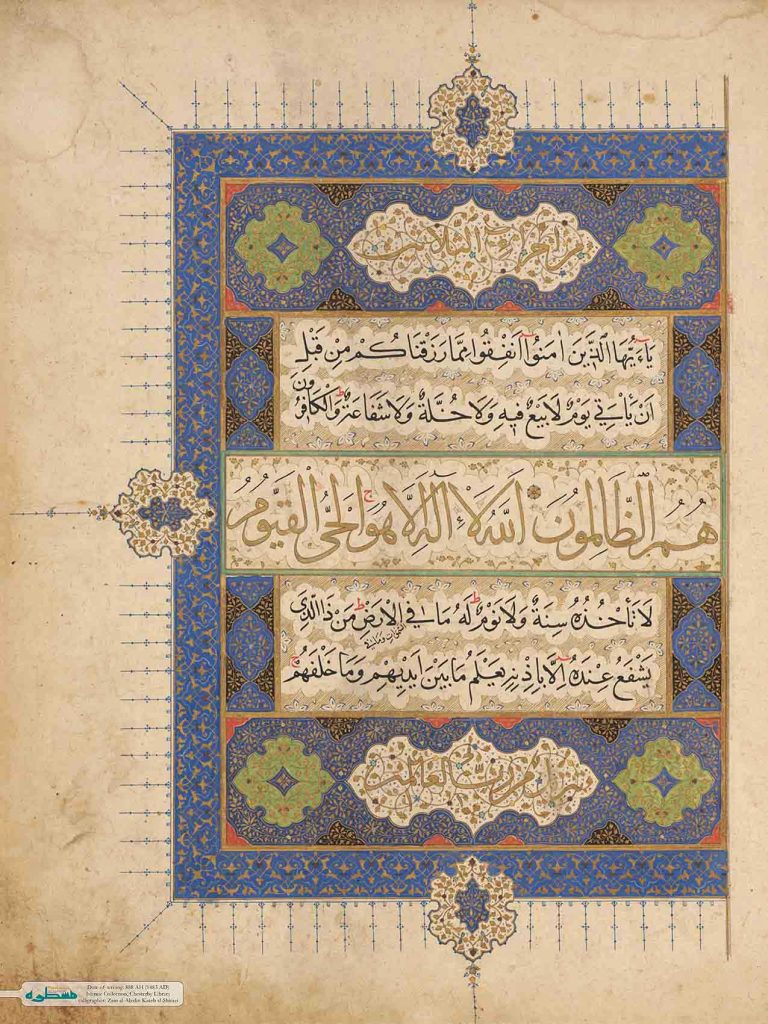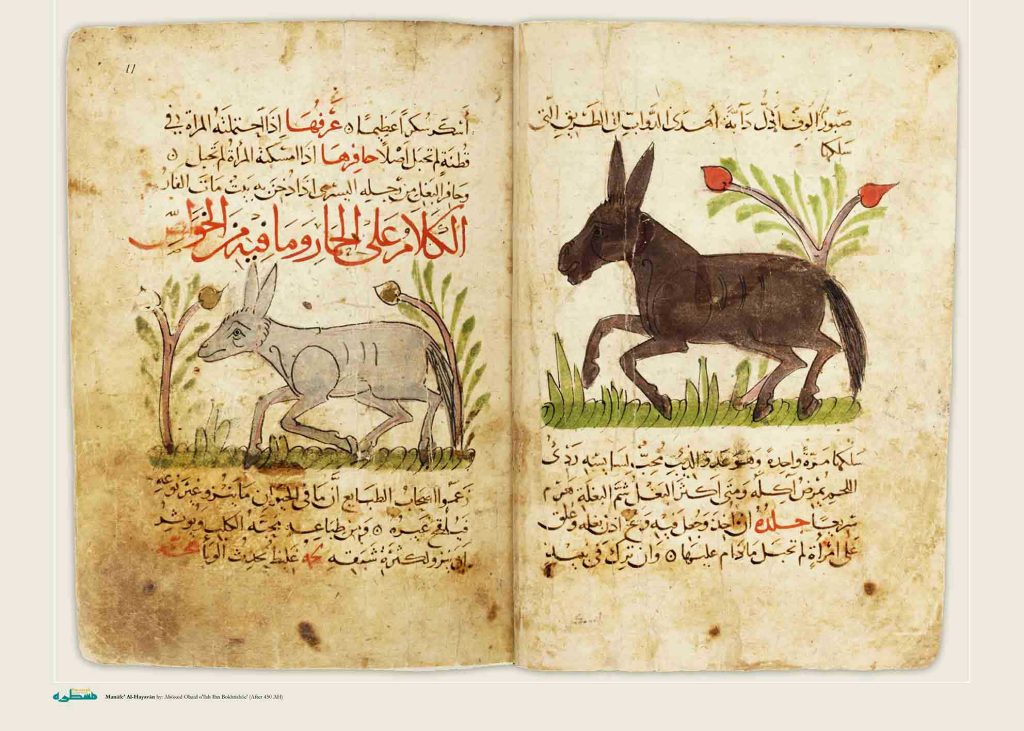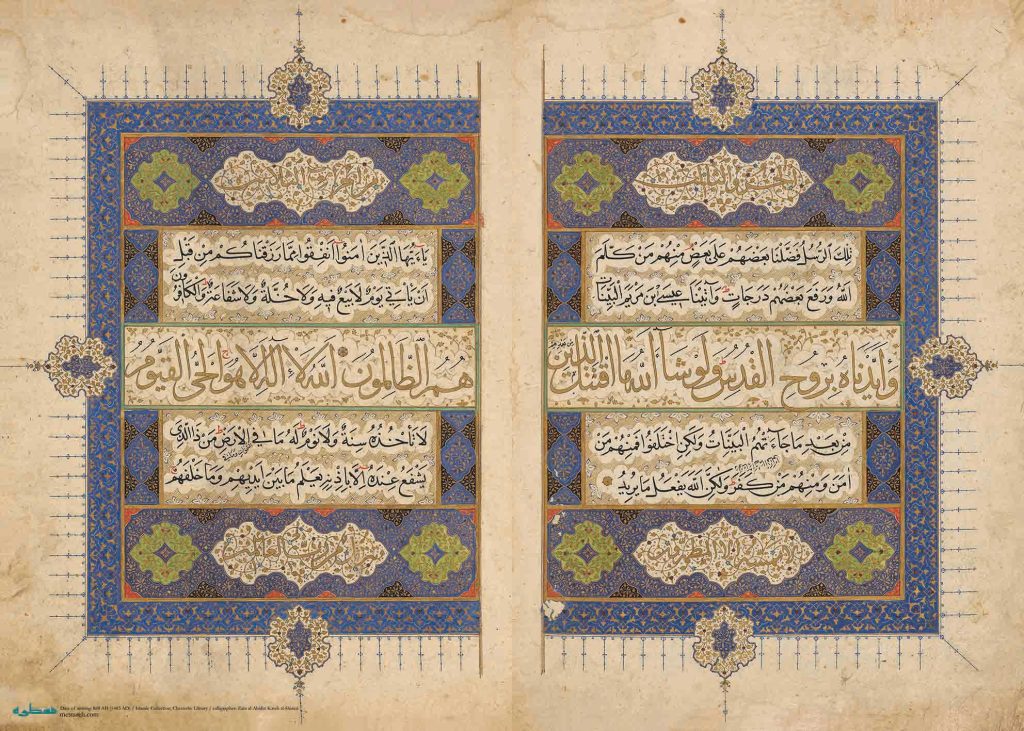The Thirtieth Juz of the Ariana Quran
Calligraphic name
Font type
Date of writing
Version

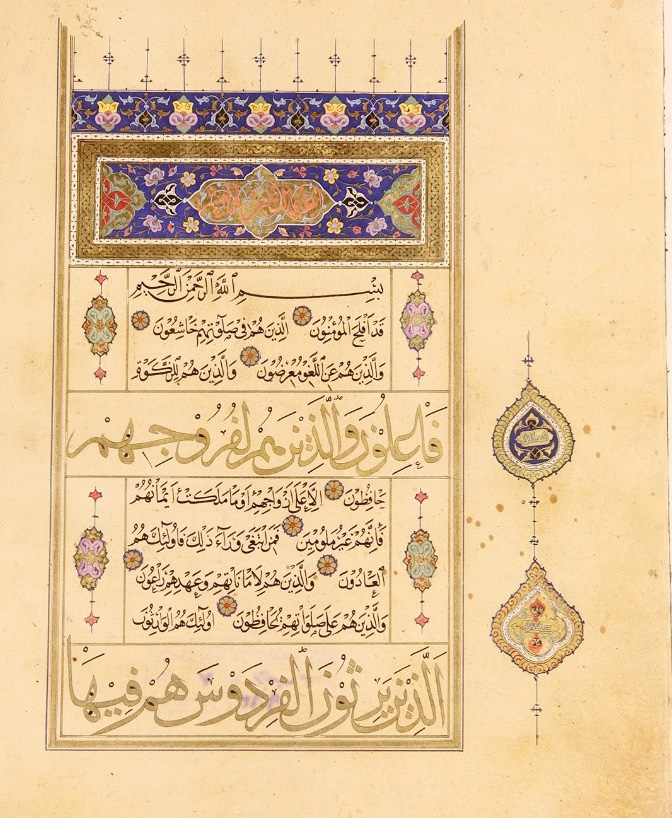
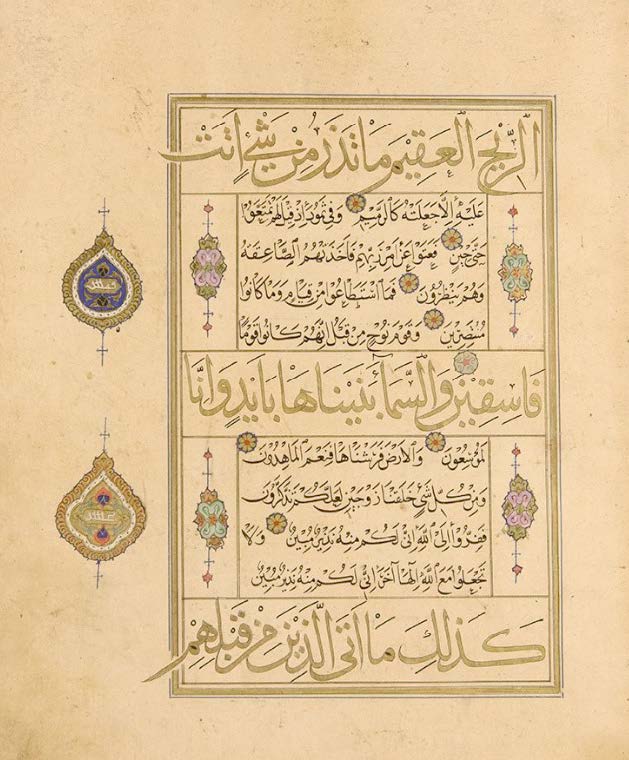
The 30th part of the Quran
Ariana, cataloged as number 991 and preserved in the library of Astan Quds
Razavi, is one of the last exquisite multi-volume Qurans of Iran, displaying
the finest features of Iranian Quranic art.
While details about the
scribe, endower, date, and location of its creation remain unknown, its visual
characteristics reflect a consistent style that likely originates from one of
the prominent centers of Quranic production in Iran during the 9th and 10th
centuries AH. The dating of this manuscript, based on its similarities in
script and illumination to the Quran of Abdullah Tabakh and Quran number 206,
places it within the period of 834 to 975 AH. This volume measures 21 × 29.5 cm and consists of 19 folios, with each page
featuring eleven lines written in the scripts of Muhaqqaq, Thuluth, and Naskh.
Part 991, which includes the
30th juz of the Ariana Quran, was probably intended for simultaneous recitation
by multiple readers in public spaces like tombs or mosques, particularly during
Ramadan. Its connection to the manuscript production center in Herat is
supported by its script, illumination, and dimensions.
اشتراک گذاری :
Form is loading
Please Wait
Easy Form Builder

